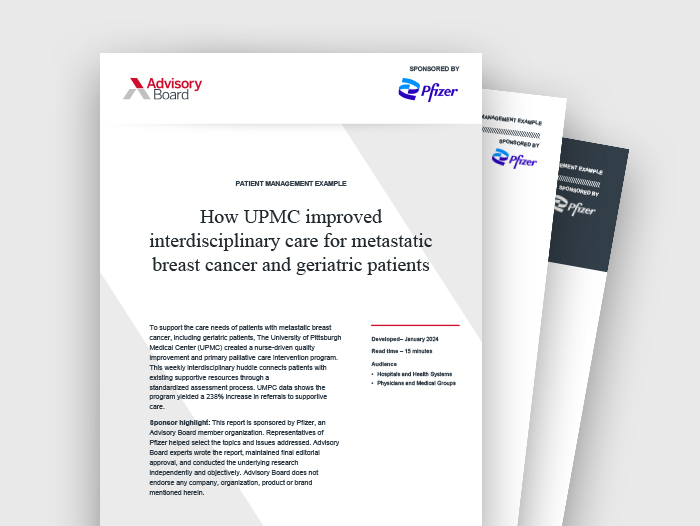According to a new study published in Nature, around 20% of healthy adults ages 50 and older have at least one organ that is aging at a faster rate, something that could indicate an organ-specific disease and increase their mortality.
Study details and key findings
For the study, researchers examined 5,676 adults who were part of five independent cohorts. Data on the participants came from the Covance study, the LonGenity study, the Stanford Alzheimer's Disease Research Center, the Stanford Aging Memory Study, and the Knight Alzheimer's Disease Research Center.
The researchers analyzed 4,979 proteins in blood samples from 1,398 healthy individuals who were part of the Knight Alzheimer's Disease Research Center cohort. From there, they identified around 850 proteins that originated from a single organ and used a machine-learning algorithm to determine a person's age based on their levels of certain proteins. The model was validated using blood samples from the remaining participants.
In total, the model assessed 11 key organs: heart, fat, lung, immune system, kidney, liver, muscle, pancreas, brain, vasculature, and intestine. For each organ, the researchers determined if it had an "age gap," or difference between its actual age and the estimated age from the algorithm.
Overall, 18.4% of the participants ages 50 and older had one organ with accelerated aging, and 1.7% had multiple organs with accelerated aging. According to the researchers, when the biological age of an organ was greater than the chronological age of a participant, there was a 20% to 50% higher risk of organ-specific diseases and mortality.
For example, participants who had older hearts had a 250% increased risk of heart failure. Vascular aging was also associated with Alzheimer's disease progression, predicting it as accurately as plasma phosphorylated tau 181, a common biomarker of the disease. Kidneys with accelerated aging were associated with diabetes, obesity, hypercholesterolaemia, and hypertension, while accelerated aging in the muscles was associated with gait impairment.
Notably, both heart attacks and Alzheimer's disease were linked to accelerated aging in "virtually all organs," while others were only linked to aging in one or a subset of organs.
The researchers also noted limitations to the study. Because the study only focused on a subset of organs, it's not clear if the findings apply to all organs. The researchers also cautioned against extrapolating the data to individuals under the age of 50.
Commentary
According to the researchers, the findings could help scientists develop targeted treatments for age-related health problems or create personalized treatment plans.
"If we can reproduce this finding in 50,000 or 100,000 individuals, it will mean that by monitoring the health of individual organs in apparently healthy people, we might be able to find organs that are undergoing accelerated aging in people's bodies, and we might be able to treat people before they get sick," said Tony Wyss-Coray, a professor of neurology at Stanford University and one of the study's authors.
Separately, Matt Kaeberlein, a specialist in the biology of aging and CEO of Optispan, noted that protein biomarkers could help researchers identify potential targets for anti-aging treatments in the future.
These protein biomarkers could also "help people by directing them to change their lifestyle or take some supplement," Kaeberlein said. "That's powerful regardless of causality," which will be more time-consuming to determine.
However, he noted that "we don't have a good understanding if these clocks are actionable or precise yet," and that more research is needed.
In the future, the researchers said they hope to expand their participant base to include more ethnically and geographically diverse populations since the participants in the current study were mostly white Americans. Future studies could also assess multiple blood samples from patients over time to see how organ aging may change.
"We may gain new insight into the biological mechanisms that lead to that heart aging," Wyss-Coray said. (Robertson, MedPage Today, 12/6; Kozlov, Nature, 12/6; Oh et al., Nature, 12/6; Goldman, Stanford University, 12/6)
Explore who makes up the aging population, how their health and financial status has changed over time, and what labor force supports them.
Don't miss out on the latest Advisory Board insights
Create your free account to access 1 resource, including the latest research and webinars.
Want access without creating an account?
You have 1 free members-only resource remaining this month.
1 free members-only resources remaining
1 free members-only resources remaining
You've reached your limit of free insights
Become a member to access all of Advisory Board's resources, events, and experts
Never miss out on the latest innovative health care content tailored to you.
Benefits include:
You've reached your limit of free insights
Become a member to access all of Advisory Board's resources, events, and experts
Never miss out on the latest innovative health care content tailored to you.
Benefits include:
This content is available through your Curated Research partnership with Advisory Board. Click on ‘view this resource’ to read the full piece
Email ask@advisory.com to learn more
Click on ‘Become a Member’ to learn about the benefits of a Full-Access partnership with Advisory Board
Never miss out on the latest innovative health care content tailored to you.
Benefits Include:
This is for members only. Learn more.
Click on ‘Become a Member’ to learn about the benefits of a Full-Access partnership with Advisory Board
Never miss out on the latest innovative health care content tailored to you.


